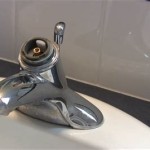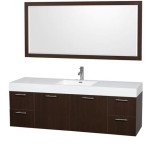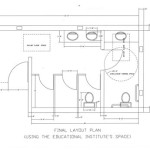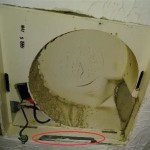How to Wire a Bathroom Fan, Light, and Heater: A Comprehensive Guide
Wiring a bathroom fan, light, and heater combination unit can seem complex, but with careful planning, adherence to safety protocols, and a solid understanding of electrical principles, it can be a manageable DIY project. This article provides a detailed guide on how to safely and effectively wire such a unit. It is crucial to emphasize that electrical work can be dangerous. If there is any doubt about one's ability to perform the work safely and correctly, a qualified electrician should be consulted.
Before commencing any electrical work, safety must be the paramount concern. Power to the circuit being worked on must be disconnected at the circuit breaker panel. Verify that the power is off using a non-contact voltage tester. Wear appropriate personal protective equipment (PPE), including safety glasses. Always consult local electrical codes and regulations, as they may vary depending on the jurisdiction. Ensure the chosen fan, light, and heater unit is compliant with all applicable safety standards and building codes.
Understanding the Components and Wiring
Bathroom fan, light, and heater combination units typically feature separate functionalities that require individual wiring connections. These functions often include:
- Fan: Primarily for ventilation, removing moisture and odors from the bathroom.
- Light: Provides illumination for the bathroom.
- Heater: Offers supplemental heating to warm the space quickly.
Each of these functions often requires a dedicated wire, typically connected to a corresponding switch. This means that understanding the unit's wiring diagram is critical. The wiring diagram, usually found in the unit's instruction manual, illustrates the connections between the unit's internal components and the incoming power supply. It will identify which wires control each function (fan, light, and heater) and the neutral and ground wires.
The incoming power supply typically consists of three wires: a black (hot) wire, a white (neutral) wire, and a green or bare copper (ground) wire. The hot wire carries the electrical current, the neutral wire provides a return path for the current, and the ground wire provides a safe path for electricity in the event of a fault.
Commonly, a multi-wire circuit is used to power a bathroom fan, light, and heater. This involves running a 12/3 (or 14/3 depending on the amperage) cable from the circuit breaker to the switch location, and then to the bathroom fan unit. This cable contains a black (hot), red (hot), white (neutral), and bare copper (ground) wire. The black and red wires can be used to independently control the fan and the light/heater combination, or the fan, light, and heater can each have their own dedicated hot wire. It depends on the desired control scheme and the unit's requirements.
The switch configuration is also a key element to consider. Typically, a multi-gang switch box is used, containing separate switches for the fan, the light, and the heater. The incoming power (from the breaker) is connected to each switch via a pigtail. The outgoing wires from each switch then connect to the corresponding wires in the cable that runs to the fan, light, and heater unit. The neutral wire is connected to the neutral wire in the cable, and the ground wire is connected to the ground wire in the cable, and also to the metal box (if applicable).
Step-by-Step Wiring Process
The wiring process must be approached methodically to ensure safety and proper functionality. The following steps outline a general approach. Always consult the manufacturer's instructions for the specific unit being installed, as wiring configurations can vary.
- Preparation: Turn off the circuit breaker supplying power to the existing bathroom fixture or the new circuit being installed. Verify that the power is off using a non-contact voltage tester. Gather all necessary tools and materials, including wire strippers, wire connectors (wire nuts), electrical tape, a screwdriver, a drill (if needed for mounting), and the appropriate gauge wire. Inspect the new bathroom fan, light, and heater unit for any damage before beginning installation.
- Mounting the Unit: Install the unit according to the manufacturer's instructions. This may involve attaching it to ceiling joists or using a mounting bracket. Ensure the unit is securely mounted and properly aligned.
- Wiring the Switch: Install the multi-gang switch box and switches. Connect the incoming power wire (from the breaker) to each switch via a pigtail. Connect the outgoing wires from each switch to the respective wires that will run to the bathroom fan unit. For example, one switch would control the fan, another the light, and the third the heater. Secure the switches in the switch box.
- Running the Wire: Run the appropriate gauge wire (typically 12/3 or 14/3) from the switch box to the location of the bathroom fan, light, and heater unit. Secure the wire to the studs or joists using appropriate staples, ensuring that the wire is not pinched or damaged.
- Wiring at the Unit: Connect the wires according to the wiring diagram provided with the unit. This typically involves connecting the black (hot) wire from the switch controlling the fan to the fan wire on the unit, the red (hot) wire from the switch controlling the light to the light wire on the unit, and the hot wire from the switch controlling the heater to the heater wire on the unit.The neutral wire connects to all neutral wires in the unit. The ground wire connects to the ground screw on the unit and back to the ground screw available on the j-box enclosure. Use wire connectors (wire nuts) to securely join the wires, ensuring that no bare wire is exposed. Wrap the wire connectors with electrical tape for added insulation and security.
- Testing: After all wiring is complete, carefully inspect all connections to ensure they are secure and properly insulated. Turn the circuit breaker back on. Test each function (fan, light, and heater) to ensure they are working correctly. If any function does not work, immediately turn off the circuit breaker and re-check the wiring connections.
Important Considerations and Troubleshooting
Several key considerations can impact the success and safety of wiring a bathroom fan, light, and heater combination unit. These include:
- Wire Gauge: Using the correct wire gauge is critical. The wire gauge must be appropriate for the amperage of the circuit and the wattage of the unit. Consult the electrical code and the manufacturer's instructions to determine the correct wire gauge.
- Circuit Breaker Size: The circuit breaker must be sized appropriately for the load being placed on the circuit. Overloading a circuit can lead to tripped breakers or, in severe cases, electrical fires. Consult the electrical code and the manufacturer's instructions to determine the correct circuit breaker size.
- Grounding: Proper grounding is essential for safety. The ground wire provides a safe path for electricity in the event of a fault, preventing electrical shock. Ensure that the ground wire is securely connected to the ground screw on the unit and to the grounding system in the electrical panel.
- Local Codes: Electrical codes vary depending on the jurisdiction. Always consult local electrical codes and regulations before commencing any electrical work. This ensures that the work is performed safely and legally.
- Moisture: Bathrooms are inherently damp environments. Ensure that all electrical connections are properly insulated and protected from moisture. Consider using moisture-resistant wiring and sealing any openings in the electrical box. GFCI (Ground Fault Circuit Interrupter) protection should be provided for the circuit, as mandated by electrical codes in bathrooms.
Troubleshooting electrical problems requires a systematic approach. If the unit does not work after installation, the following steps can be taken:
- Verify Power: Ensure that the circuit breaker is not tripped and that power is reaching the switch. Use a non-contact voltage tester to check for voltage at the switch.
- Check Wiring Connections: Carefully inspect all wiring connections to ensure they are secure and properly insulated. Look for loose wires or damaged insulation.
- Consult Wiring Diagram: Refer to the wiring diagram to ensure that the wires are connected correctly. Incorrect wiring is a common cause of electrical problems.
- Test Components: If possible, test the individual components (fan, light, and heater) to determine if one of them is faulty. This can help isolate the problem.
- Consult an Electrician: If the problem cannot be identified or resolved, consult a qualified electrician. Electrical troubleshooting can be dangerous, and a professional can diagnose and repair the problem safely and effectively.
Furthermore, if the heater portion of the unit is not functioning, it is essential to verify the amperage draw of the heater itself. Bathroom heaters often require a dedicated 20-amp circuit due to their higher wattage. Lower amperage circuits might not be sufficient to power the heater effectively, leading to it not working or tripping the circuit breaker. Check the heater's specifications in the manufacturer's documentation to confirm its amperage requirements.
Choosing the correct type of wiring for the bathroom fan, light, and heater combination is equally important. Non-metallic sheathed cable (NM cable), commonly known as Romex, is often used for residential wiring. For installations in damp locations like bathrooms, it's crucial to select the appropriate type of NM cable. NM-B cable is the standard type for interior wiring and is suitable for dry locations. However, for areas with potential moisture, consider using UF (Underground Feeder) cable, which is water-resistant. While UF cable is commonly used for outdoor applications, it can also be used indoors in damp locations. Always consult local electrical codes to ensure compliance with the approved wiring methods.
When making wire connections, it's always preferable to use properly sized wire connectors (wire nuts) that are rated for the specific wire gauge. Ensure the wires are stripped to the correct length to make a secure connection within the wire nut. Twisting the wires together before applying the wire nut can improve the connection's conductivity and mechanical strength. After securing the wire nuts, gently pull on each wire to ensure that it is firmly held in place. Wrapping the wire nuts with electrical tape provides an extra layer of insulation and helps prevent them from loosening over time.

Electrical Wiring A Heater Vent Fan Light For Bathroom Home Improvement Stack Exchange

Electrical Shared Ground On Bathroom Light Fan Heater Combo Home Improvement Stack Exchange

What Switch Would I Use To Replace An Existing 3 Way Bathroom Light Fan Heat Setup General Discussion Inovelli Community

How To Wire A Bathroom Fan Light Fixture Configuration For 1 Or 2 Switch Electrical Circuit

Exhaust Fan Wiring Diagram Timer Switch

How Can I Wire My Bathroom Light And Fan

Bathroom Heater Light Fan Installation Information Purchase Ie

How To Put Broan 164 Vent Light And Heater On Separate Switches

Electrical How Can I Rewire My Bathroom Fan Light And Receptacle Home Improvement Stack Exchange

How To Wire Fan Heater Doityourself Com Community Forums
Related Posts







